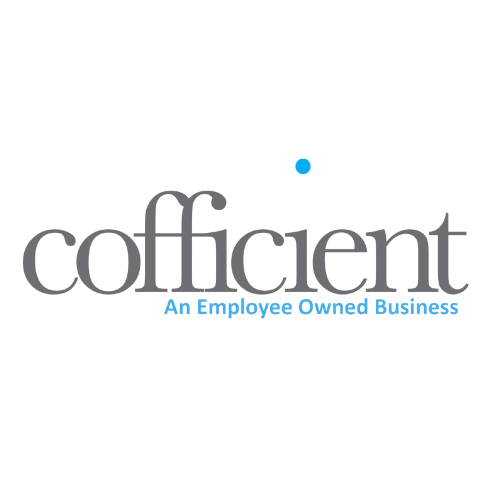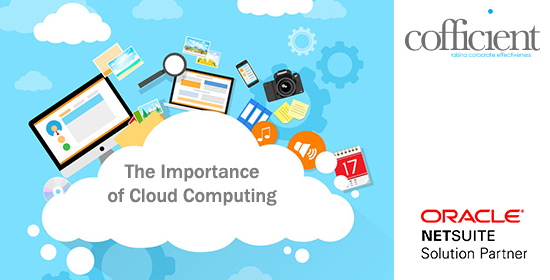Software as a Service Versus On Premise. Which is Best for You?
Software as a Service Versus On Premise
Back when I started Cofficient, I took the decision to be a cloud only business. It was a difficult decision; especially back in 2008 when cloud, full of promise, had not yet hit the “tipping point“.
Back then, when we were talking to prospects, they would often include one of our cloud products as part of their search and select. We were losing deals to the likes of Sage and Microsoft on premise software and it felt, at times, that the cloud product was a token gesture; not to be taken seriously.
Things have changed in the intervening years.
Cloud is a big hitter; it’s one of the most impactful changes to have happened to the software landscape these past 10 years or so.
The trend has been stark. Growth has been exponential; cloud uptake has quadrupled since we started our business nearly 10 years ago. Estimates suggest up to 85% of enterprise use cloud in some form or other.
What Works for You?
Cloud works for our business. We think it’s the way forward. But as with anything, it is not a utopia and pros and cons of both cloud and on premise need to be reviewed before you make your next move.
Something else we decided when we started our business in 2008, was that we would never sell someone a cloud solution if it wasn’t right for their business.
Continuing the spirit of impartiality which drives our business day to day, I wanted to outline the main pros and cons of each cloud and on premise. If you are unsure of which route to go down, perhaps this will help you form your opinion.
Software as a Service (SaaS)
You buy the software as an ongoing annual subscription – usually for 12 months or longer.
SaaS providers sell you access to their software, which is hosted in the cloud, and charge for use of their software through an annual subscription.
There are various SaaS pricing models from “pay for what you consume” to “pay per user type”
For example, NetSuite allow you to build up the version of the software you want to use by selling you a standard CRM system with the option to add on modules (bolt-ons that extend the use of the system). SAP on the other hand, allow you to access the system through various “user types” who have access to a full suite of functionality for that role.
Either way, the price is typically dependent on what you use.
“On Demand” software has become increasingly popular in recent years as businesses want to move away from the onerous responsibility of on-premise and the effort required to maintain, and host the software.
Gartner has predicted that the SaaS market will be (directly and indirectly) worth $1trillion by 2020.
Pros:
- Your immediate costs could be lowered since you only pay for what you need and you don’t need IT infrastructure like server and maintenance costs
- You don’t need to worry about becoming “version locked” or having to upgrade the software a few years down the line; SaaS software is updated multiple times a year. Updates are simply published out to users as part of the subscription costs
- It’s easier to up-scale SaaS. You simply add on users and functionality as your business grows and develops
- You don’t need to worry about business continuity or security since the world’s leading software vendors will be taking care of that as part of your annual subscription
- It’s more environmentally friendly. ICT accounts for 7.1billion tonnes of CO2 emissions (about 8% of the total global output). By sharing tenancy of servers within a data centre, you are ensuring that server usage is at 40-70% as opposed to 10-15% for on-premise. It’s been estimated that if 80% of the companies who could use cloud, did use cloud it would be the equivalent of losing 1.7m cars from the road
Cons:
- You’ll need to get used to the fee being an annual, recurring one. It isn’t a pay and keep model
- Your data doesn’t “live” within your four walls. Instead it will be in your vendor’s data centre. Whilst most data centres will be incredibly secure and compliant with all the most common security protocol, some people like the comfort of keeping it on-premise
- Expect your software bill to grow with your business. The cost should be sustainable and in line with business growth, but you need to be prepared for increasing costs
On Premise
You buy the software upfront then install and manage it on your local server.
Unlike cloud based software, on-premise software comes with the responsibility of infrastructure and comms upgrades.
The most traditional way of consuming software, this method requires the customer to host their software on their own physical server – typically in the same office as the majority of staff is located.
Pros:
- You might feel more secure knowing that your data is physically stored within your four walls. Having visibility of your data, because you know where it is stored, can feel comforting
- You are not limited by the availability (or otherwise) of broadband.
- The initial costs are lower because you don’t have the ongoing subscription costs.
- On-premise tends to work better for people who don’t trust cloud or cloud software vendors
Cons:
- Total cost of ownership is more over the long run. In fact, by about year 2 or 3 you will find the costs of on-premise start to balance, then over take. This is principally because of the cost of the IT infrastructure and the upgrades start to impact.
- Working off-site is achievable but harder. Usually a VPN line will push and pull data back and forth from the server but typically you will experience latency and frequent interruptions
- Most of the software vendors have acknowledged that the traditional on-premise model is in the dependency (like cloud) and have placed their eggs in the cloud basket. For traditional on-premise providers, like Sage, this means investing less in Sage 200 and more in Sage Live. For Microsoft, similar with their Dynamics Nav product. There is industry wide speculation, that these products will become end-of-line products as companies expand their cloud offering
If you want to take some impartial advice about SaaS vs On Premise, feel free to talk to our customers too.
I hope this overview helps you to make the decision about what is right for you.
Written by Paul Tindal – Founder at Cofficient Ltd
Cofficient provision cloud based business software for small and medium sized business across the UK. Helping your business become more effective and efficient.
[su_button url=”/contact” style=”3d” size=”5″ center=”yes” icon=”icon: book”]Talk to Paul about your software project[/su_button]



